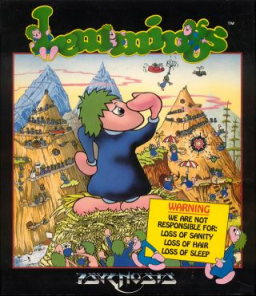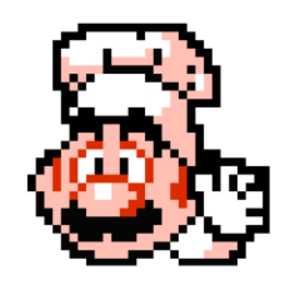Hey y'all. I plan on doing a little of refining of the rules for the various ports in order to clarify exactly how timing will begin and end for the purposes of verification.
As you know, many of the various ports of the game have subtle differences, and the particulars as to how a level loads and unloads is no different.
At the end of the day, when verifying runs, particularly for the purposes accuracy and consistency, it's important for runs/ports to have a singular frame in which I can point at and say, "This is when the timer starts" and "This is when the run is considered over".
It use to be clearer, but as more runs have added on with new ports, I think it's important for me to go back and get all runs on the same page, and with the timing methods being explicit for each port.
I'm working on the draft right now of all the currently ran ports. As you can see... no single method is likely going to work for all ports. I've listed my thinking for each port up to this point, as I went with the best single frame occurrence I could use on a given port.
MS-DOS Input, Slightly Delayed Fade Last unfaded frame. IGT Stops, Slow Fade Out The first frame in which the final IGT second is visible
SNES/SFC Input, Very Delayed Fade Last unfaded frame. IGT Turns 0, Slow Fade Out The first frame in which the IGT 0:00 appears on successful last level.
NES/FC Input, Immediate Black Few Frames First black frame. Immediate Black Screen Preceding Post Level Info The first frame in which the screen goes black on successful last level.
SMS Input, Medium Fade, one Frame Level The first frame the level appears. Two Frame Load Out The first frame in which the entire after level screen appears.
Genesis Input, Very Delayed Fade Last unfaded frame. IGT Turns 0, Slow Fade Out The first frame in which the IGT 0:00 appears on successful last level.
Amiga Input, Immediate Fade Last unfaded frame. IGT Turns 0, Slow Fade Out The first frame in which the IGT 0:00 appears on successful last level.
PSP Input, Menu Disappears in Frame Last frame menu is visible. Post Level Screen Appears in Single Frame The first frame in which the after level page is visible on successful completion of last level
Atari ST Input, Medium Fade Last unfaded frame. IGT Turns 0, Slow Fade Out The first frame in which the IGT 0:00 appears on successful last level.
Comments, suggestions, etc. are welcome. After a couple weeks, I'll go through the runs to update the rules and retime runs as needed accordingly.
I'll try to find another way to present my notes a lot more easy to read, lol. oof.
Hey :) I can understand your desire for precision but I suspect you're overthinking the situation. As you say, port differences are apples and oranges. All the runs are timed to second precision, no frames in sight. And no runs are within 1 second of each other. For SMS for example, you have a clear moment of gain-control from L1 splash screen, and a clear moment of end-control when OUT hits 0. When I do IL perfect demos I frame-time, but for a 30 level run, n seconds is sufficiently clear. 16 bit level exit fades are fine too. What worries you about the current timing?
Undoubtedly, precision is a weird way to phrase it; since as you say, we aren't having to measure any two runs against one another to the millisecond to figure out which is faster (though, I can conceive of a scenario happening at some point, where a tie would need to broken in some way). But I do need an objective spot for which to measure, which I attempt to do all games I moderate. I just rather have a very specific fact to point at, then having to put off the decision until it does actually come up (which, even with the low number of runners, I do expect a tie to happen, eventually. In NES, the Fun run is only 12-13 seconds from TAS).
When I first started the board; the answer seemed obvious, but as more ports got added, it's become more obvious there is no "Time starts X, Time ends Y" statement I could make that make sense for all ports; thus the reason for needing to break it up. I'm going to repost my notes in a much better format when I get a chance.
But about SMS:
"For SMS for example, you have a clear moment of gain-control from L1 splash screen, and a clear moment of end-control when OUT hits 0."
Ha, you can see the complexity. For ending time, having OUT hits 0 makes perfect sense; you have to actually get all the lemmings off the screen in order to pass the levels (the phrasing doesn't work for other ports where one can simply exit the level before all lemmings are removed). But for the purposes of SMS, Lemming counter hitting 0 makes perfect sense. It also makes perfect sense for NES as well, so I'll clarify that as well.
The beginning time, do you mean to say that you began timing immediately once the pre-L1 screen was visible (meaning before doing the input that actually starts the level?) I can see why, it does appear that when inputting from the first menu to the splash screen, the change takes place in a single frame.
First the most part, I've tried to work beginning times around the input from the splash screen that starts the level (or begins the fade out to the level). On NES, this is a one frame change. You hit A, the level starts. The SMS however takes at least 10 frames to fade to black. The splash screen loading might make more sense, since that is an actual single frame change. Seems to me the timing method you used for your run is definitely suitable for timing SMS runs.
I understand. I have recently retimed a board that was using a very shaky fadein, I find anything that's a discrete frame off/on is a better metric. I mean that I started time only at the moment I press 2 on the pre-screen, since that's the gain of control. Because we can't expect hardware users to show input I always use a definitive change. I'll take a look at a few different versions and see what I find.
So as a brief example, from pre-screen, you get a crisp fade at f+93 GEN but a very hard to see fade at f+171 SNES, and in both cases you get control a tad before the level fades in, which seems to broadly mirror most other versions, whereas SMS you can't move until the trapdoor. A thought: what about just using the first frame the trapdoor opens as a start point? Since control is a vague meta before you can apply the changes to lems anyway, the trapdoor is a fair and clear visual constant that can't hinder runners or make mod work harder. Yes, most versions allow menu control before that, but it's also loading time: before Lems exist, there is no game. If you did want super specific time you can frame time the diff from pre-screen button press, to trap door, and just add it as a platform-specific constant to each run.
The Door Opening seemed promising but looking over the SNES for example, it appears, user gains control before the doors open, and so lemming release rates can be changed in that window.
But yes, seems SNES just, at least of the ones runs so far, it loads pretty slow.
I plan on looking at more closely tomorrow night.
Windows 95 has a fast forward function that greatly differentiates itself from the IGT (because the way it functions is winding the time down very fast), no one runs that version but for the single levels would it make more sense to use real time?
(Also, I was thinking of running the DOS version from my native PC, but it's not high-end compatible, so it would be a bit silly to try and compete with DOS if I'm not playing the high end mode for fade outs)







